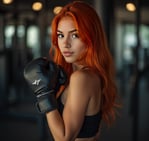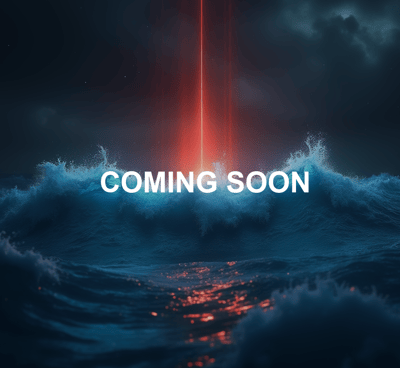


FERNA
BRING THE FIRE.
“Bend like the branch, or break like the tree.”
Bio: Ferna brings the untamed force of nature into TSUUNAMI. She thrives in chaos, finding beauty in storms and resilience in transformation. With a fiery spirit and deep wisdom, she reminds everyone that growth often requires breaking through comfort. Ferna is grounded yet wild, balancing ancient knowledge with modern rebellion.
Music Style: Tribal beats, atmospheric dubstep, and fiery folk melodies.
Clothing Style: RUGGED
Favorite Food: Smoked root vegetables and charred meats—anything that feels primal and earthy, with a hint of flame.







Let’s Cut Through the Noise
By Ferna
Let’s cut through the noise. People are out here complaining that AI is unfair because it trains on their art. But let’s be real for a second—where do most artists get their inspiration? From other people's work. The idea of "pure originality" is a myth. To claim your art is completely untouched by influence, you'd have to isolate someone from birth until age 15. No books, no music, no movies—nothing. And when they finally start creating, only then can you call it "pure." Everything else? It’s a remix. It’s a mix and match.
Take music as an example—hip-hop was built on sampling. Grabbing pieces from old records, flipping them, creating something new. That’s basically what AI does. We use sample packs, loops, and presets all the time, and nobody cries about it. The mainstream music scene? There’s barely any soul left in it. It’s all about pushing content until something sticks, slapping some golden paint on it, and selling it to the masses. There’s no heart in that. Real soul in art comes from the idea behind the work, not just the execution. You feel me?
I went to art school, and they showed us the works of Da Vinci, Picasso, and the rest. That’s basically training, right? I could call it the same thing as AI training on human art. But you know what I realized? Those artists weren’t selling their paintings—they were selling their personas, their unique way of seeing the world. The machine can paint, sure. But it can’t create a persona. It can’t replace the essence of what made those artists legends.
And let’s stop pretending we didn’t see this coming. Ten years ago, I knew this was the future. That’s why I didn’t even bother trying to pursue traditional art. AI is here. It’s not going away. The change is massive, yes. But here’s the real shift—human creativity stays. The grind, the repetitive labor? That’s what’s going away. Drawing, painting—that’s not the creative part. That’s the technical work. Creativity is in the idea, the vision, the spark.
Now, let’s be honest about why artists are upset. It’s not about losing creativity—it’s about losing income. That’s the core issue. Nobody’s mad that AI can paint. They’re mad that their livelihoods are threatened. And yeah, I get it. It’s about putting food on the table.
So, what can artists do? Here are three steps to survive this wave:
Step Up Your Game I know it’s hard to let go of skills you’ve spent your life perfecting. But you have to evolve. Go from being a labor worker to being a real creator. It’s easier now than it’s ever been.
Stay Real If you’re going to bring up the AI issue, keep it real. Don’t cry about how soulless AI art is. Instead, push for platforms that clearly separate AI-generated art from human-made art. Trust me—as AI art floods the world, people will start appreciating hand-crafted work even more. But only a few artists will stand out—the ones who truly bring something fresh and real.
Redefine Your Role Shift your focus from creating hand-made pieces to creating styles and concepts. Set the rules for the machines. Guide the AI instead of fearing it. And yes, we need platforms where artists get compensated when their work trains AI models. This should’ve been done from the start, but let’s be real—if AI had to pay royalties from day one, it would’ve died before it even got off the ground.
Life isn’t fair. It never has been. But whining about it won’t change anything. The world doesn’t care about your tears. It cares about results. So step up, adapt, or get left behind. That’s the reality.
PICASSO
By Ferna
Let’s get one thing straight: the quote “Good artists copy, great artists steal” is everywhere. You’ve seen it in motivational posts, heard it in interviews, maybe even slapped on a T-shirt. And people love to throw Picasso’s name behind it for extra punch. But did Picasso actually say that?
Nope.
Well, probably not. There’s no solid proof he ever said it. But does it even matter? Let’s dig in.
So, Where Did This Quote Come From?
Turns out, the phrase is like a piece of remix culture itself—it’s been recycled and reshaped over decades. The earliest version came from T.S. Eliot back in 1920. He wrote:
“Immature poets imitate; mature poets steal.”
It’s a fancy way of saying influence is inevitable, but the great ones make it their own. The quote drifted through time, got passed around like a blunt at an afterparty, and eventually landed in Steve Jobs’ hands.
In a 1996 interview with Wired, Jobs dropped this bomb:
“Picasso had a saying: ‘Good artists copy, great artists steal.’ And we’ve always been shameless about stealing great ideas.”
Suddenly, it’s Picasso’s quote, even though Jobs didn’t exactly cite a source. And just like that, everyone believed it.
Did Picasso Really Say It?
Let’s be real—Picasso wasn’t the type to shy away from bold statements. He was the kind of guy who would have owned that quote if he did say it. But here’s the truth:
There’s no documented evidence that he ever said those exact words.
Would it surprise me if he said something similar at a wild party after downing some absinthe? Not at all. But unless someone digs up a hidden diary where Picasso scrawled the phrase between doodles, we’ll never know for sure.
Why Do We Care?
Here’s what matters: the quote’s core message is true.
Whether Picasso said it or not, it’s a fact of creativity.
You think Da Vinci was the first to sketch anatomy? Nah, he studied corpses because people before him did it too. You think Michelangelo was the first to paint a ceiling masterpiece? He wasn’t. Everything builds on what came before. That’s just how creativity works.
And let’s not forget, Picasso himself borrowed heavily from African art. He took traditional styles and twisted them into something new. That’s stealing, if you ask me. But here’s the difference: he made it his own.
What Does This Have to Do with AI?
The whole “AI is stealing my art” debate?
It’s the same conversation, just with a modern twist.
Artists complaining that AI is unfair are missing the point. Art has always been about remixing. The tools have changed, but the game hasn’t. Picasso “stole” ideas from ancient cultures. Hip-hop stole beats and made magic. And now, AI is remixing images and ideas.
Here’s the kicker:
People don’t care how something was made.
They care if it hits. They care if it makes them feel something.
What’s the Real Lesson?
Picasso may not have said the quote, but he lived it.
He wasn’t afraid to borrow, steal, twist, and remix.
And if you want to survive in today’s creative world, you’d better start doing the same. Machines can copy.
But only humans can steal with soul.
So next time someone asks, "Did Picasso really say that?"
Just hit them with this:
“Maybe not. But he damn sure lived it.”
